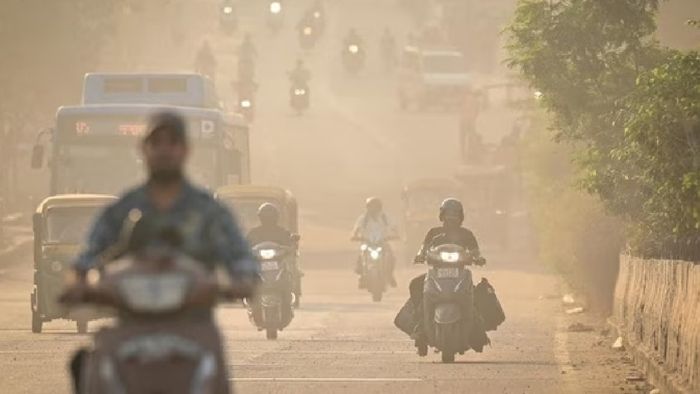Delhi’s air quality deteriorates to “severe-plus” post-Diwali, breaches hazardous 500 AQI mark
Delhi's air quality plunged into alarming depths early Sunday morning, as the Air Quality Index (AQI) breached the hazardous 500 threshold just days after Diwali, reaching a severe AQI reading of 507 at 7 am.

- Nov 03, 2024,
- Updated Nov 03, 2024, 9:17 AM IST
Delhi's air quality plunged into alarming depths early Sunday morning, as the Air Quality Index (AQI) breached the hazardous 500 threshold just days after Diwali, reaching a severe AQI reading of 507 at 7 am. This hazardous spike, reported by IQAir, signifies one of the season’s highest pollution levels, positioning Delhi and the National Capital Region (NCR) among the world’s most polluted areas, with air toxicity reaching levels over 65 times higher than the World Health Organization's (WHO) safe limits.
The city and its neighboring regions were engulfed in a dense smog layer, significantly reducing visibility and registering as "severe-plus" on the AQI scale—an alert that signifies immediate health dangers to all individuals, not just those in sensitive groups. The AQI levels, categorized as ‘poor’ from 200-300, ‘very poor’ from 301-400, and ‘severe’ from 401-450, have escalated to “severe-plus” beyond 450, highlighting an urgent public health threat.
A drastic shift in air quality was observed Saturday evening, with the AQI surging from 327 at 9 pm—classified as ‘very poor’—to a hazardous 507 by early Sunday. This swift rise of over 150 points marked a sharp decline in air quality across various parts of the city, as local neighborhoods, including Anand Vihar, Dwarka, Jahangirpuri, Patparganj, Nehru Nagar, and more, reported extreme pollution levels. According to real-time data from the Sameer app by the Central Pollution Control Board (CPCB), these regions shifted from "very poor" to "severe" air quality overnight.
Since Diwali, pollution has persisted at elevated levels in the capital, with most areas recording AQI levels above 350—prompting widespread health concerns for Delhi’s millions of residents. A recent LocalCircles survey indicates that 69% of residents are experiencing respiratory symptoms, such as cough and sore throat, while 62% report eye irritation. Many attribute this post-Diwali pollution surge to firecracker emissions and seasonal factors.
Despite the implementation of GRAP-II measures—part of the government’s emergency response to escalating pollution—the efforts appear insufficient against the current pollution wave. Initiated by the Commission for Air Quality Management (CAQM) on October 21, GRAP-II mandates restrictions on construction, surveillance intensification, and restrictions on specific industrial operations. However, the unyielding pollution levels underscore the need for more comprehensive, long-term strategies to mitigate Delhi’s recurrent pollution crisis, especially during the winter and post-Diwali period when air quality frequently declines to hazardous levels.